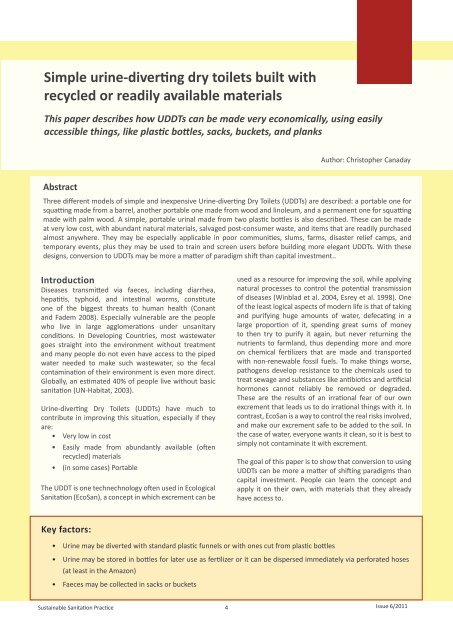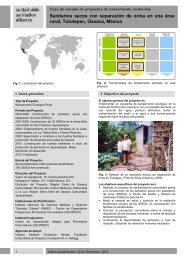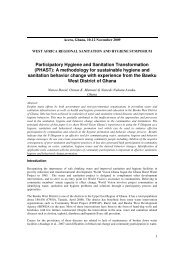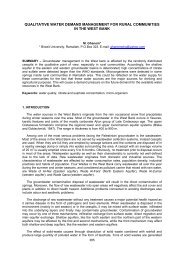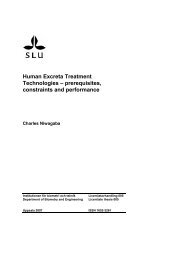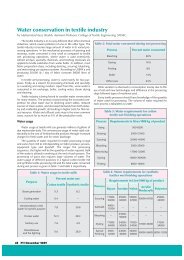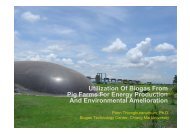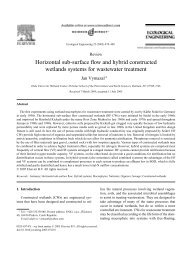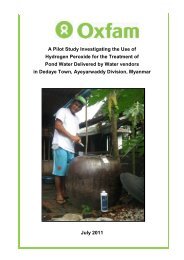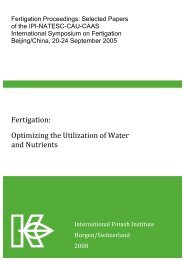Experiences with urine diverting dry toilets - EcoSan Club
Experiences with urine diverting dry toilets - EcoSan Club
Experiences with urine diverting dry toilets - EcoSan Club
You also want an ePaper? Increase the reach of your titles
YUMPU automatically turns print PDFs into web optimized ePapers that Google loves.
Simple <strong>urine</strong>-<strong>diverting</strong> <strong>dry</strong> <strong>toilets</strong> built <strong>with</strong><br />
recycled or readily available materials<br />
This paper describes how UDDTs can be made very economically, using easily<br />
accessible things, like plastic bottles, sacks, buckets, and planks<br />
Abstract<br />
Key factors:<br />
• Urine may be diverted <strong>with</strong> standard plastic funnels or <strong>with</strong> ones cut from plastic bottles<br />
Sustainable Sanitation Practice<br />
4<br />
<br />
<br />
<br />
<br />
Author: Christopher Canaday<br />
Three different models of simple and inexpensive Urine-<strong>diverting</strong> Dry Toilets (UDDTs) are described: a portable one for<br />
squatting made from a barrel, another portable one made from wood and linoleum, and a permanent one for squatting<br />
made <strong>with</strong> palm wood. A simple, portable urinal made from two plastic bottles is also described. These can be made<br />
at very low cost, <strong>with</strong> abundant natural materials, salvaged post-consumer waste, and items that are readily purchased<br />
almost anywhere. They may be especially applicable in poor communities, slums, farms, disaster relief camps, and<br />
temporary events, plus they may be used to train and screen users before building more elegant UDDTs. With these<br />
designs, conversion to UDDTs may be more a matter of paradigm shift than capital investment..<br />
Introduction<br />
Diseases transmitted via faeces, including diarrhea,<br />
hepatitis, typhoid, and intestinal worms, constitute<br />
one of the biggest threats to human health (Conant<br />
and Fadem 2008). Especially vulnerable are the people<br />
who live in large agglomerations under unsanitary<br />
conditions. In Developing Countries, most wastewater<br />
goes straight into the environment <strong>with</strong>out treatment<br />
and many people do not even have access to the piped<br />
water needed to make such wastewater, so the fecal<br />
contamination of their environment is even more direct.<br />
Globally, an estimated 40% of people live <strong>with</strong>out basic<br />
sanitation (UN-Habitat, 2003).<br />
Urine-<strong>diverting</strong> Dry Toilets (UDDTs) have much to<br />
contribute in improving this situation, especially if they<br />
are:<br />
• Very low in cost<br />
• Easily made from abundantly available (often<br />
recycled) materials<br />
• (in some cases) Portable<br />
The UDDT is one technechnology often used in Ecological<br />
Sanitation (<strong>EcoSan</strong>), a concept in which excrement can be<br />
• Urine may be stored in bottles for later use as fertilizer or it can be dispersed immediately via perforated hoses<br />
(at least in the Amazon)<br />
• Faeces may be collected in sacks or buckets<br />
used as a resource for improving the soil, while applying<br />
natural processes to control the potential transmission<br />
of diseases (Winblad et al. 2004, Esrey et al. 1998). One<br />
of the least logical aspects of modern life is that of taking<br />
and purifying huge amounts of water, defecating in a<br />
large proportion of it, spending great sums of money<br />
to then try to purify it again, but never returning the<br />
nutrients to farmland, thus depending more and more<br />
on chemical fertilizers that are made and transported<br />
<strong>with</strong> non-renewable fossil fuels. To make things worse,<br />
pathogens develop resistance to the chemicals used to<br />
treat sewage and substances like antibiotics and artificial<br />
hormones cannot reliably be removed or degraded.<br />
These are the results of an irrational fear of our own<br />
excrement that leads us to do irrational things <strong>with</strong> it. In<br />
contrast, <strong>EcoSan</strong> is a way to control the real risks involved,<br />
and make our excrement safe to be added to the soil. In<br />
the case of water, everyone wants it clean, so it is best to<br />
simply not contaminate it <strong>with</strong> excrement.<br />
The goal of this paper is to show that conversion to using<br />
UDDTs can be more a matter of shifting paradigms than<br />
capital investment. People can learn the concept and<br />
apply it on their own, <strong>with</strong> materials that they already<br />
have access to.<br />
Issue 6/2011


